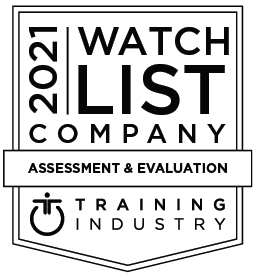When I first started working at Mandel Communications, I was amazed to hear that one of the most powerful communication skills you can possess is simply the ability to say nothing at all.
I was skeptical. I wondered, “How could not talking help me get my ideas across? Won’t I lose control of the conversation?”
Since then, I’ve fallen madly in love with “the power of the pause.” My goal is to help you fall in love with it, too. Today, I want to talk about:
- Why I think pausing is critical.
- What mastering this skill will do for you and your communications.
- How you can get from where you are now to where you’d like to be.
This topic is so important to me. I’ve seen first-hand how pausing can help you communicate with greater clarity and confidence — and help your listeners derive more value from your message.
Why is pausing so important? Just for fun, start listening to those around you as they speak, especially during meetings. Are they as clear and concise as they could be?
Or, do you see a virtual “word cloud” above their heads, filled with low-value, filler words like “um” and “ah” or “so, you know, basically, LIKE….”? Aghh, you get the picture!
Now, imagine those same presentations and conversations, but with all of those filler words replaced with pauses. (By the way, my friends in Latin America call filler words muletillas, or little crutches!)
Do you hear the difference?
Pausing cleans up your message.
Think of a pause as the verbal equivalent of punctuation in print. Can you imagine reading a book with no punctuation at all? Or one where commas and periods were replaced with “ums” and “ahs”?
Eliminating no-value words makes you sound smarter and more articulate.
Using pauses in place of crutch words makes it easier for listeners to, both, understand and trust what you’re trying to say.
Pausing gives listeners a moment to process what you’ve said.
It also gives them space to interact with you. And, those interactions may give you powerful insights into what they’re thinking and feeling about what you have to say.
What will pausing do for you? Pay careful attention to your own speaking patterns, and you’ll begin to notice what your “word cloud” looks like.
Everyone’s looks a little different. For example, over the years I’ve almost eliminated “ah” and “um” and “uh,” but I still tend to overuse words like “so” and “and.”
Once you’re aware of your own word cloud, you can take conscious steps to eliminate your top offenders and replace them with pauses. Only by trying this out can you truly grasp the power of the pause and how it can positively impact your communications.
Here are just some of the benefits you’ll experience:
Pausing gives you time to think.
Rather than speaking in run-on sentences, or seeming unprepared for unexpected questions, pause and take a breath. This gives you time to assess your audience’s mood, make sure you’re on message, and even think through how you want to respond to questions that do come up.
Pausing helps you avoid redundancy.
Sometimes a message gets lost because the messenger “overtalks” it. Remember the famous sales adage, “Don’t talk past the close.” The same is true when you’re “selling” your ideas. Less is more.
Pausing calms your nerves.
An interesting, and almost counter-intuitive, benefit of pausing is it helps you gain a sense of control over your message and delivery.
Simply pausing and thinking, or stopping to check your notes during a presentation or taking a drink of water, puts you back in the driver’s seat and puts the brakes on your nerves.
Pausing also helps you to strike a comfortable conversational rhythm, rather than the rushed tempo we often feel in business presentations.
Now, how do you get from where you are now to where you want to be? First, become aware of your own word cloud. Ask friends and family what they observe. Record yourself on your smart phone, either in a conversation or when giving a presentation. This will help you identify your top offenders.
Then, take the following steps to rewrite your word cloud:
Make a conscious effort to pause when you feel the urge to “um” or “ah.”
This will take time to master. I promise, it’s worth the effort!
Plan intentional pauses.
For example, plan to take a look at your notes, ask for questions, or take a drink of water. In addition to building purposeful opportunities for audience interaction, this will get you into the habit of pausing — a habit that, with enough practice, becomes second-nature.
Record yourself again.
This is an iterative process. Self-coaching and the feedback of colleagues, friends, and family will be invaluable in your quest to embrace “the power of the pause.”
We are all filler word fallible. The best presenters and most effective conversationalists are the ones who know where their weaknesses lie (or what their word clouds look like) and then make a conscious effort to improve them.
I’m a living example that anyone can harness the power of the pause — and improve how they communicate — through sober self-assessment and a practiced commitment to saying nothing at all, especially when the urge to “um” and “ah” is greatest.










